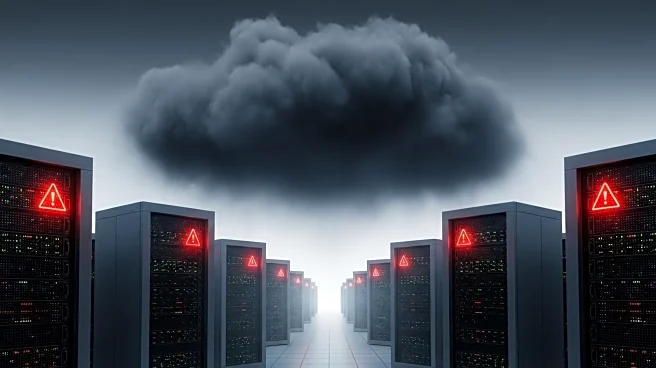What's Happening?
The ransomware group known as Storm-0501 has executed a novel attack on a large enterprise's Microsoft Azure environment, deleting data and backups post-exfiltration. The attack marks a significant evolution in ransomware tactics, as the group leveraged cloud features to rapidly exfiltrate data without relying on traditional on-premises malware. Storm-0501, which has been active since 2021, targeted multiple subsidiaries within the enterprise, compromising Active Directory domains and achieving domain administrator privileges. The group performed a DCSync attack to obtain password hashes and used the Entra Connect Sync Directory Synchronization Account for reconnaissance.
Why It's Important?
This attack underscores the growing threat of ransomware actors targeting cloud environments, which are increasingly used by organizations for data storage and operations. The ability to delete backups post-exfiltration prevents victims from restoring data, increasing the pressure to pay ransoms. As cloud adoption continues to rise, businesses must prioritize securing their cloud infrastructure and implementing robust backup strategies. The attack also highlights the need for comprehensive cybersecurity measures that address both on-premises and cloud vulnerabilities, as threat actors adapt their tactics to exploit new opportunities.
What's Next?
Organizations affected by Storm-0501's tactics may need to review and strengthen their cloud security protocols, including implementing multifactor authentication and conditional access policies. The broader cybersecurity community is likely to monitor this evolution in ransomware techniques, potentially leading to new industry standards and best practices for cloud security. As other threat actors may adopt similar strategies, businesses across various sectors must remain vigilant and proactive in their cybersecurity efforts.
Beyond the Headlines
The attack raises ethical questions about the responsibility of cloud service providers in ensuring the security of their platforms. It also highlights the cultural shift towards cloud-based operations and the associated risks. As ransomware tactics evolve, there may be increased demand for cybersecurity professionals with expertise in cloud environments, influencing workforce development and education in the field.











